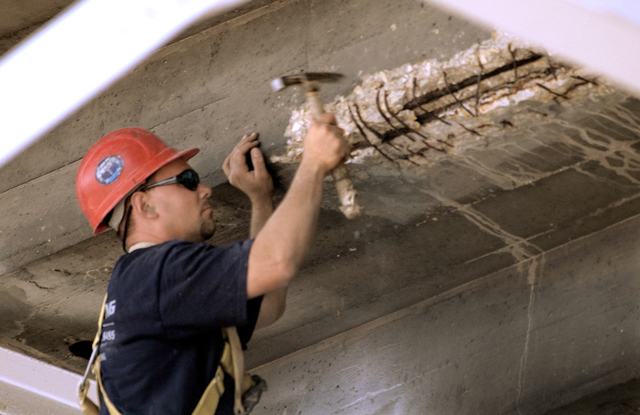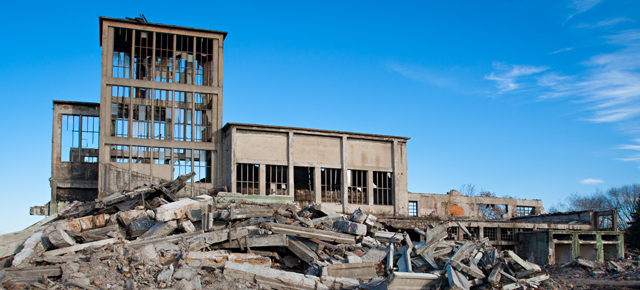Our modern world is literally built on concrete. This cheap, strong material is everywhere — skyscrapers, bridges, highways, tunnels — and it’s hard to imagine what our cities would look like without it. But concrete has a weak spot, and climate change could make it even worse.
Concrete has been around since ancient times, but the formula we use now is a relatively modern invention. You see, concrete is very strong, but it can easily crack when stretched. Engineers in the late 19th century found that steel bars, or “rebars”, reinforcing the concrete made it with much better at withstanding stretches.

Exposed rebar in concrete. AP Photo/M. Spencer Green
That’s one problem solved, but another created. While concrete doesn’t corrode easily, steel does, Kevin Hartnett explains in an article for the Boston Globe. Climate change could hasten two natural processes: carbonation, where carbon dioxide gets into the concrete, and chloration, when chloride ions in water get into it. Both processes cause steel to corrode and expand, destroying the concrete from the inside. Carbonation is the worse culprit, which is ironic given that the production of cement, a component of concrete, is one reason for rising carbon dioxide levels in the atmosphere. Yeah, oops.
Hartnett cites a recent study from Northeastern University that considers the worst case scenario for Boston: 60 per cent of the city’s concrete buildings will face structural deterioration by 2050. Another study comparing concrete infrastructure in six cities — New York, Toronto, Vancouver, London, Mumbai and Sydney — suggests that climate change could shorten the lifespan of buildings by 15 to 20 years. The carbonation will be worst in hot, moderately humid cities.
It’s not all bad news, the Globe notes, because we can take steps to make concrete buildings last longer (and also take steps reduce carbon emissions but that’s a whole other can of worms). We can make the concrete around rebar thicker, so it takes longer for carbon dioxide to reach the steel. Or cover the steel in epoxy. Or spray acrylic on the concrete. It will take money, but so will fixing damaged buildings. [The Boston Globe]
Picture: Zorandim/Shutterstock
